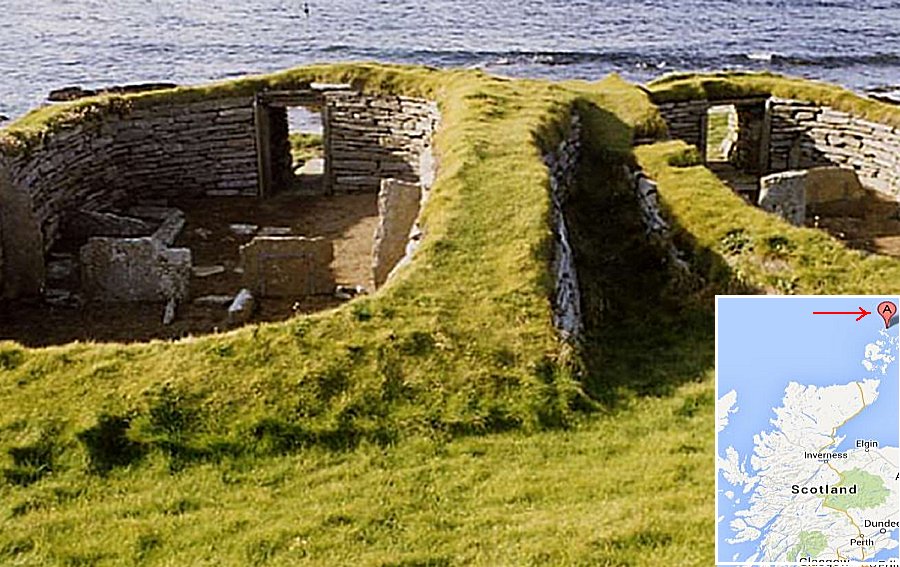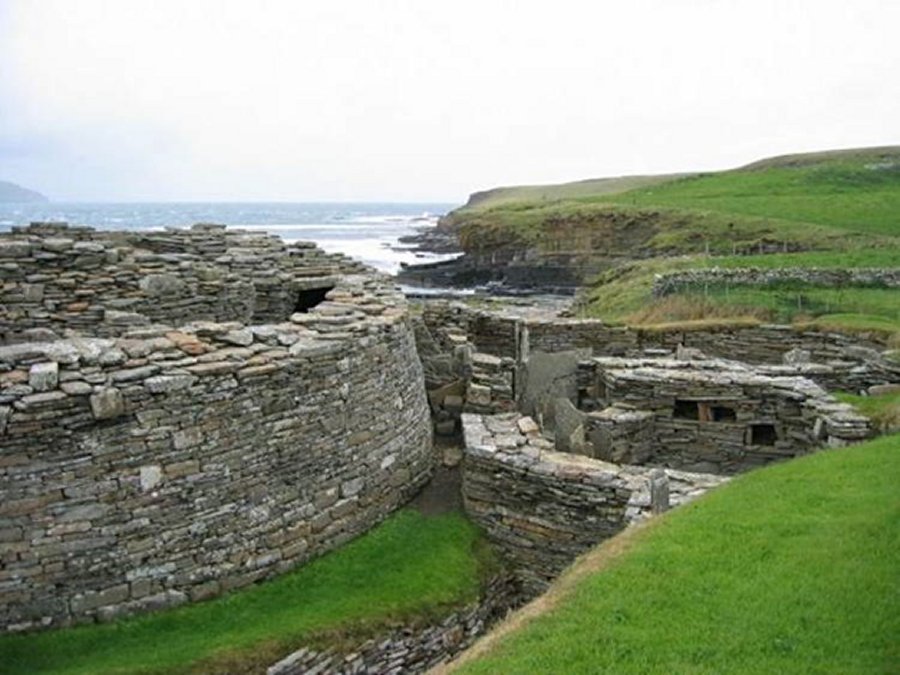MessageToEagle.com – A Neolithic standing farmhouse – believed to be one of the oldest in northern Europe – is located on one of Orkney’s smaller isles, Papa Westray, remote and only about six square miles in extent.

Despite the harsh climate in this part of Europe, these buildings are still surprisingly well-preserved with stone partitions, stone benches and doorways still intact.
The farmhouse Knap of Howar (“knoll of mounds” or in Old Norse, “mound of mounds”) contains two oblong, stone-built houses, placed side-by-side and linked by a passage through the joined walls.
The houses were occupied by Neolithic farmers who lived from 3700 BC to 2800 BC, earlier than the similar houses in the settlement at Skara Brae on the Orkney Mainland.

Structures have been discovered accidentally in the 1930s when sea erosion revealed vast deposits of midden material, along with the well-built stone walls.
Soon, archaeologists excavated the ancient site buried under approximately two meters of sand and except for buildings, they also unearthed some artifacts that date back to the Iron Age.
See also:
Incredible 5,000-Year-Old Temple Complex In Orkney Could Re-Write History Of Scotland
History Of Jarlshof – Thousands Of Years Of History With Traces Of Picts, Vikings And Scots
Mysterious Ancient Structure Discovered At The Ring of Brodgar On Orkney Scotland
Skara Brae Buddo: 5,000-Year-Old Figurine Feared Lost Has Been Rediscovered
More Ancient Civilizations And Places
Additional, more recent excavations have shown that Knap of Howar (or ‘Knap o’ Howar’) was part of a small farm that belonged to Neolithic Orcadian farmers.
The dwelling house and a multipurpose barn have still standing walls approx. 1.6 meters (5 feet) high. Living areas are without windows, and separated by huge upright stone slabs.
The outer chamber has a stone bench placed along the wall and it probably served as a kitchen equipped with a hearth, the structures were probably lit by fire, with a hole in the roof to let out smoke.
After the end of the last Ice Age, about 13,000 years ago, Mesolithic nomadic hunters settled in Scotland. By 4000BC, Neolithic farmers were already well established and their culture flourished in Orkney for than 1,500 years.
They left in legacy tombs, stone circles and the villages, probably most spectacular Neolithic monuments of northern Europe.
Copyright © MessageToEagle.com All rights reserved. This material may not be published, broadcast, rewritten or redistributed in whole or part without the express written permission of MessageToEagle.com
Expand for references





